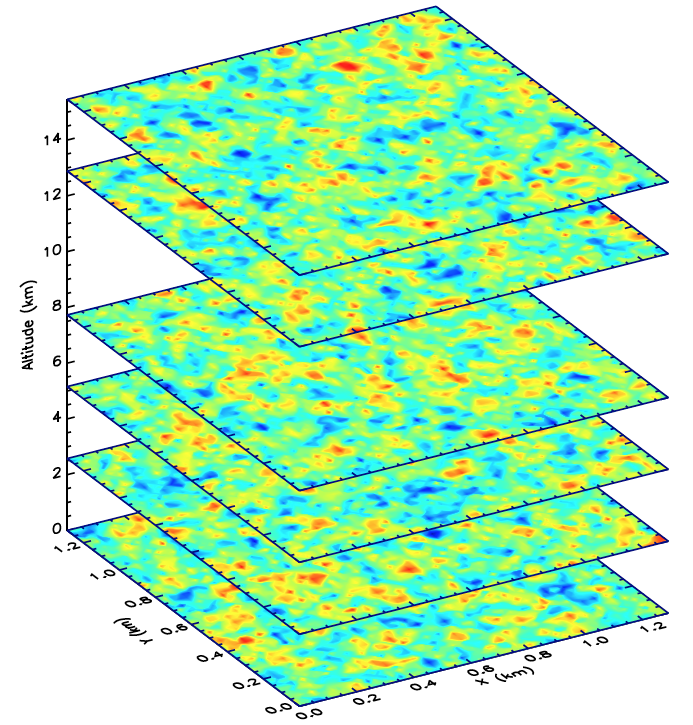Atmosphere
The dominant contribution to the LSST PSF arises from turbulence in the atmosphere. Understanding the small-angle variations in the stochastic atmospheric PSF is particularly important. Incorporating information from curvature wavefront sensors and other auxiliary measurements (DIMM, MASS) may help by informing a Bayesian prior on the angular correlation of the PSF leading to improved models of the atmosphere. Our ability to simulate the short-exposure atmosphere PSF is limited by knowledge of the physics of atmosphere turbulence (e.g., non-frozen flow, outer scale variations). Ancillary data will certainly help but improving predictions of PSF correlations would also be useful.
Recent Work:
Impact of Atmospheric Chromatic Effects on Weak Lensing Measurements, Meyers, Burchat (arXiv:1409.6273)
The Impact of High Spatial Frequency Atmospheric Distortions on Weak Lensing Measurements, Heymans et al. (arXiv:1110.4913)


